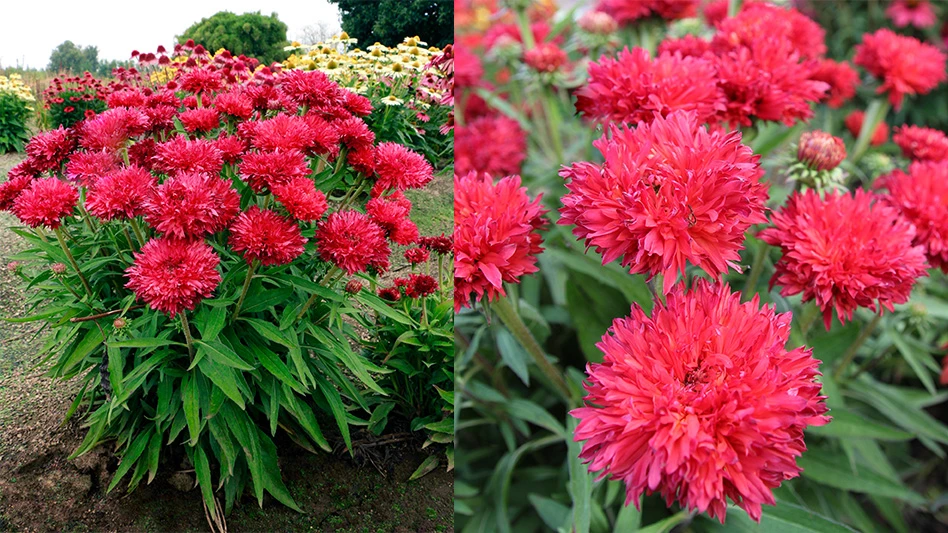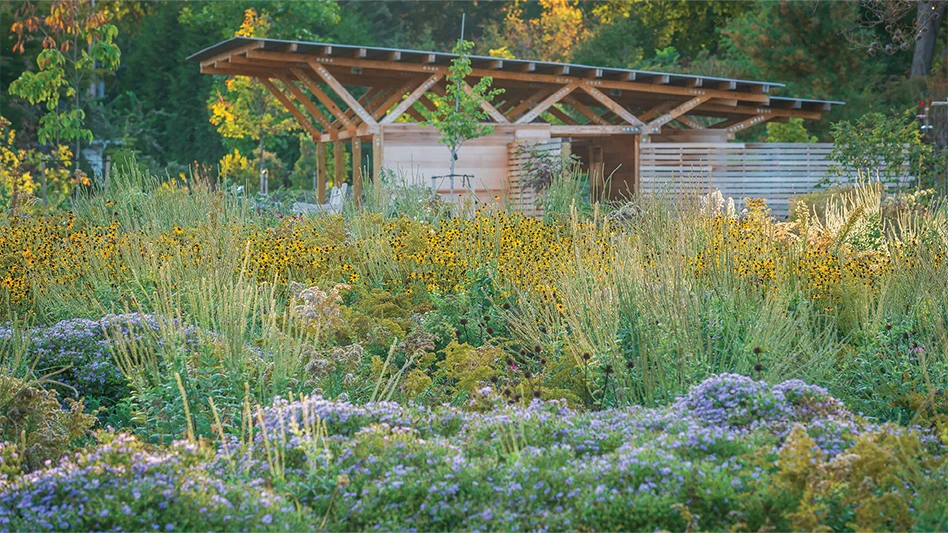 As we look forward to spring, there are some consumer trends you should be thinking about. More than that, there are some steps you can take now to take advantage and profit from some additional sales. Being prepared is a key to success for capitalizing on any consumer trend.
As we look forward to spring, there are some consumer trends you should be thinking about. More than that, there are some steps you can take now to take advantage and profit from some additional sales. Being prepared is a key to success for capitalizing on any consumer trend.
Small is Big
What you need to know: Miniature of all kinds is big in the garden center. Whether you call them fairy gardens or miniature boxes, the stakes couldn’t be bigger. From plants to garden décor, the range of small products in high demand will continue through spring 2013.
What you need to do: Bring products together in a highly visible display area where component parts can be added on a regular basis. Bonsai, Stepables, any plants with small leaves and flowers. Think about wooly thyme, Irish moss, primula, miniature roses, baby tears (Soleirolia) and campanula are a few suggestions. Use creative containers like wooden flats, wheelbarrows, and other recyclables found in storage or at a thrift store. Integrate small furniture, stepping stones, garden art, and the fairies themselves into the displays. Consider offering “Make and Take” gardening classes for grandparents and grandchildren.
 Terrariums
Terrariums
What you need to know: Like fairy gardens, terrariums are experiencing a resurgence in demand. From the recycled Mason jar to the clear glass ball, unusual containers are all the rage. Forget the unused fish tank; today’s modern terrariums are popular in unusual containers.
What you need to do: Revitalize your smaller indoor houseplant section to include demonstrations of how to make a terrarium from existing components. Show how to plant them either through a videotape loop running near the display, in a “Make and Take” class, or live in a demonstration. These would make great teachers’ gifts for the end of the school year or perfect for children to make for Mother’s Day.
Food from the garden
What you need to know: Food is interesting, not just on the table but from the garden. Demand is higher for many kinds of fresh produce, especially if it is from the backyard. Vegetable, herb, and fruit-producing plant sales are experiencing a renaissance. A 2011 consumer study with 2,528 North American participants (conducted in cooperation with five university researchers and one Canadian researcher) showed that 55 percent of the sample wanted edible ornamental plants in their household (2). A record 42.4 percent of the sample bought vegetable plants in 2011, 35.4 percent bought herbs, and 12.3 percent bought fruit-producing trees. Vegetable plant buyers were, on average, three years older than those who did not buy vegetable plants (36 years old versus 39 years old). Consumers who purchased fruit trees were 6 years younger than those who did not buy fruit trees (33 years versus 39 years old). More consumer groups were identified as having purchased food producing plants than in other prior studies. Vegetable and Perennial Passionates comprised 9 percent of the market, Fruit Fanatics comprised 6 percent of the market, and Herbivores (bought herbs) comprised 10 percent of the market.
 What you need to do: Herbs are often the first food-producing plant consumers purchase. Why? Because they can recognize basil or parsley and know how to use it. When one 4-inch container is sold, the grower and retailer make some revenue and profit. Combining herbs with vegetables helps to sell more units. Combining those two with ornament plants sells more units. Consider selling selected tomatoes, heirloom or grape, with basil plants. Offer a promotion on a winning combination. Integrate pansies or other potentially edible flowers with lettuce blends. Invite a chef into the garden center and demonstrate how to use some of the cool grills you might sell. Nothing draws a crowd like food, and the smell and taste of food. At the end of the season, consider a tomato-tasting contest. It will bring customers back to the store once more.
What you need to do: Herbs are often the first food-producing plant consumers purchase. Why? Because they can recognize basil or parsley and know how to use it. When one 4-inch container is sold, the grower and retailer make some revenue and profit. Combining herbs with vegetables helps to sell more units. Combining those two with ornament plants sells more units. Consider selling selected tomatoes, heirloom or grape, with basil plants. Offer a promotion on a winning combination. Integrate pansies or other potentially edible flowers with lettuce blends. Invite a chef into the garden center and demonstrate how to use some of the cool grills you might sell. Nothing draws a crowd like food, and the smell and taste of food. At the end of the season, consider a tomato-tasting contest. It will bring customers back to the store once more.
Sustainability
What you need to know: Increasingly, more consumers are expressing an interest in environmentally friendly products. Some studies show that nine of 10 consumers consider themselves eco-conscious. In a 2010 study, researchers showed great diversity among consumers for the type of container their plants were sold in (4). Follow-up research showed that much of the preference for container type depended on the product sold (2). Consumers who purchased annuals wanted plantable containers while consumers who purchased nursery plants wanted recyclable containers. It was also interesting that more consumers were concerned about energy conservation than water conservation (2). That may change in the near future as more geographic regions experience drought.
What you need to do: Have a diversity of containers and methods to reuse, recycle or plant them. One container will not appeal to a diverse market. Also, tell your sustainability story better. Is your company recycling more than it did five years ago? Does your business conserve more energy now that it did five years ago? Tell your customers these things on a small sign in the store, on your webpage, or in print communications. You can connect with many consumers on sustainability issues by telling your business’ story in various ways.
 Local roots
Local roots
What you need to know: Farmer’s markets are experiencing robust business, and many merchandise plants and produce. Another recent consumer study showed that consumers valued local products more than organic products (5).
What you need to do: Whether in your own retail establishment, in a farmer’s market, or in conjunction with the retailers your business serves, tout your local connection. Customers feel better about supporting local businesses, especially those that are family-owned. Talk about your roots (literally) online and in the retail outlets. It gives consumers one more reason to feel good and make another purchase.
Merchandise by color
What you need to know: The fashion industry sets many trends, including some in home decorating. Without question, many of the color trends are initiated in the fashion industry. Those color trends are set at least a season or two ahead of the clothing hitting the market. So, what other industry is almost as colorful? Ours.
What you need to do: Few businesses merchandise products alphabetically. The library and vitamin department of the local drug store are two of the few places where it makes sense to merchandise using the alphabet. Our customers want to integrate living color into their outdoor living spaces, yet we often fail to inspire them in our own visual merchandising. Whether national or house brand, consider merchandising this spring using color. Of course, separate the sun and part-sun plants, but inspire customers to use color blends and coordinating color in their outdoor living spaces.
Social media
What you need to know: Smartphone technology has been adopted faster than any new technology on the planet. Smartphone shipments grew 61 percent in 2011 over 2010 with an estimated 491 million units sold last year (3).
What you need to do: Get your website mobile-ready and consider getting into social media. Since so many smartphones are in use, it makes sense to be prepared when customers are searching for information on-the-go. Transitioning your website into one that is mobile ready will take some effort. Not adapting to a mobile-ready site may likely mean that you are invisible to your customers in the near future. Considering going social? The American Floral Endowment recently released the Social Media Guide, funded in partnership with the Floral Marketing Organization and AFE (1). The “how-to” online resource can help any horticultural business up the learning curve for social media. The guide is designed to be practical and improve the skill level of nearly every horticultural marketer desiring a social presence.
 Backyard habitat
Backyard habitat
What you need to know: Flowers and plants are attractive to more than us humans; wildlife like them also. Most wildlife is desirable, except when your customers’ habitat is too close to theirs. Then, wildlife can cause damage and deter gardening. However, many customers are interested in helping improve the bird and bee populations. That’s where our industry can help. Concern over dying honey bees and other pollinators has increased an interest in helping them. Bees need a habitat and food; often we sell the food but neglect to use a teachable moment and talk about the habitat. Butterflies aren’t often considered insects (and they are) and are another wildlife element many would like to attract.
What you need to do: Merchandise pollinator-attracting plants and plants that produce berries attractive to birds. Use informative signs and consider teaching classes on the subject. Kids and parents alike might be interested in developing a backyard habitat. We have the plant material; we simply need to organize the plants and information in a more appealing manner.
In your 2013 marketing plans, consider integrating several of these trends. They are sure to increase interest and stimulate sales.
Behe is a frequent contributor to Greenhouse Management and a professor in the department of horticulture at Michigan State University.
Cited studies
1. American Floral Endowment Social Media Guide for Retailers and Wholesalers. 2012. http://www.endowment.org/afe-news/press-releases/210-social-media-guide-for-retailers-and-wholesalers.html. Accessed 10/24/12. 2. Bridget K. Behe, Benjamin Campbell, Jennifer H. Dennis, Charles R. Hall, and Chengyan Yue. 2012 (in review). Profiling of Consumer Segments Based on Plant Purchases Shows Different Preferences for Local and Sustainable Production Characteristics. 3. Global mobile statistics 2012. http://mobithinking.com/mobile-marketing-tools/latest-mobile-stats. Accessed 10/24/12. 4. Hall, Charles, Benjamin Campbell, Bridget Behe, Chengyan Yue, Jennifer Dennis, and Roberto Lopez. 2010. The appeal of biodegradable packaging to floral consumers. HortScience 45(4):583-591. 5. Yue, Chengyan, Jennifer Dennis, Bridget Behe, Charles Hall, Benjamin Campbell, and Roberto Lopez. 2012. Investigating Consumer Preference for Organic, Local, or Sustainable Plants. HortScience 46(4):610-615.

Explore the December 2012 Issue
Check out more from this issue and find your next story to read.
Latest from Greenhouse Management
- Grant awarded to test western U.S. wood species for use as wood fiber potting substrate
- Pennsylvania Horticultural Society announces 2025 Gold Medal Plant winners
- Oasis Grower Solutions announces new Southeast territory sales manager
- A nation of gardeners: A history of the British horticulture industry
- Last Word with Angela Labrum, Bailey Nurseries
- Iowa plant supplier Plantpeddler building retail complex
- This month's Greenhouse Management magazine is about native plants and sustainability
- The HC Companies, Classic Home & Garden merge as Growscape





